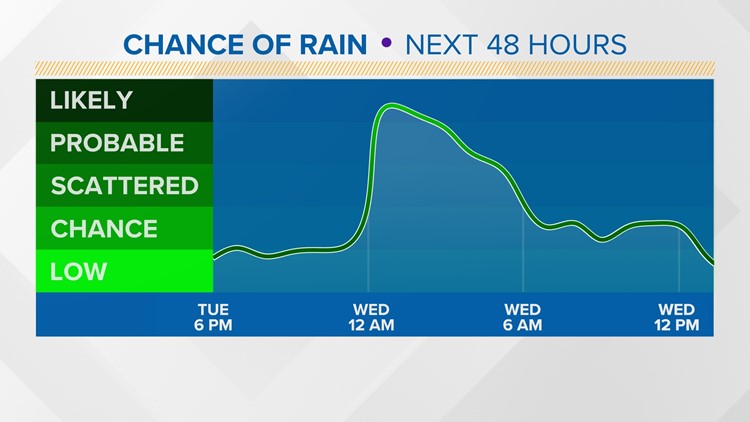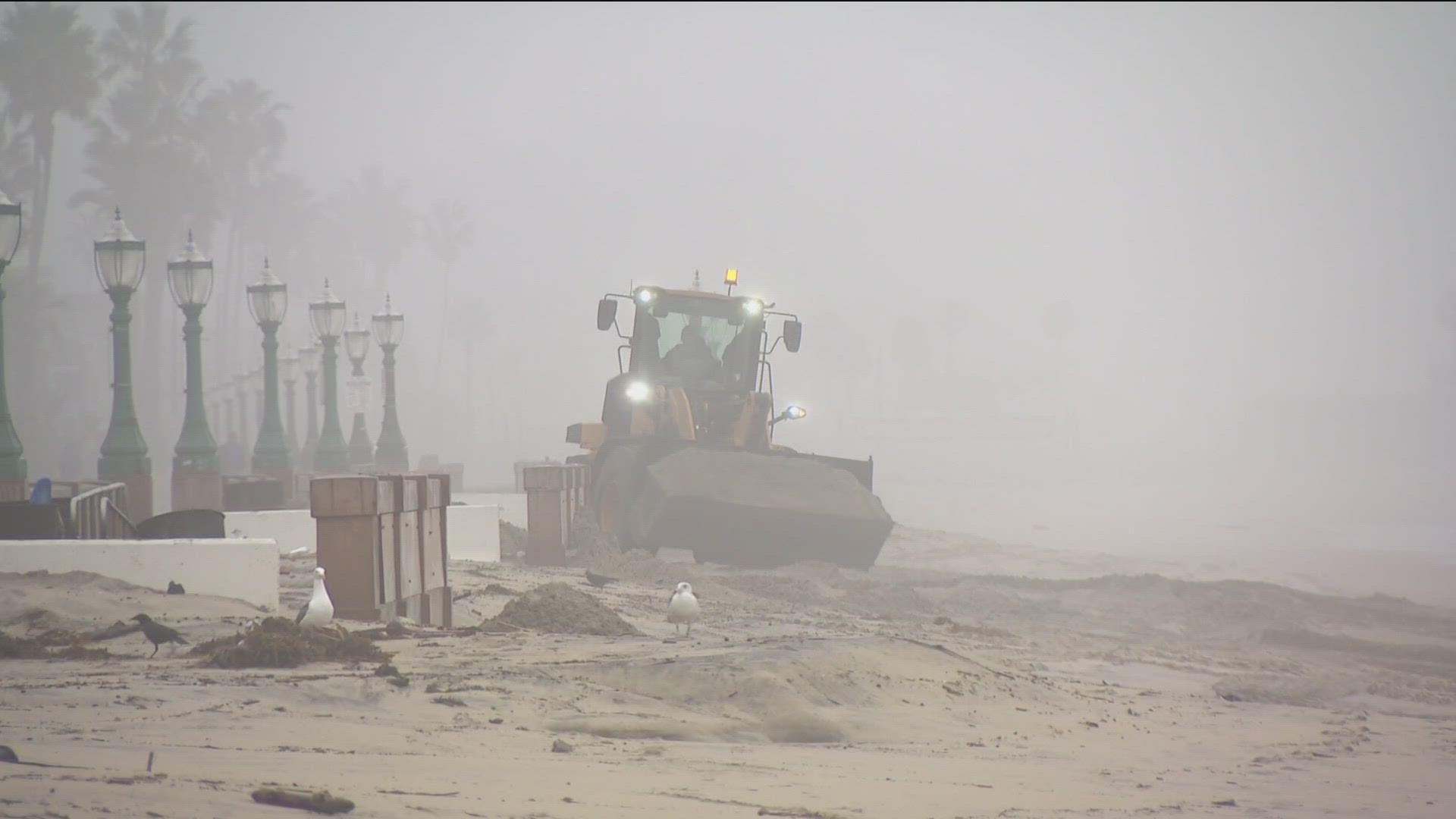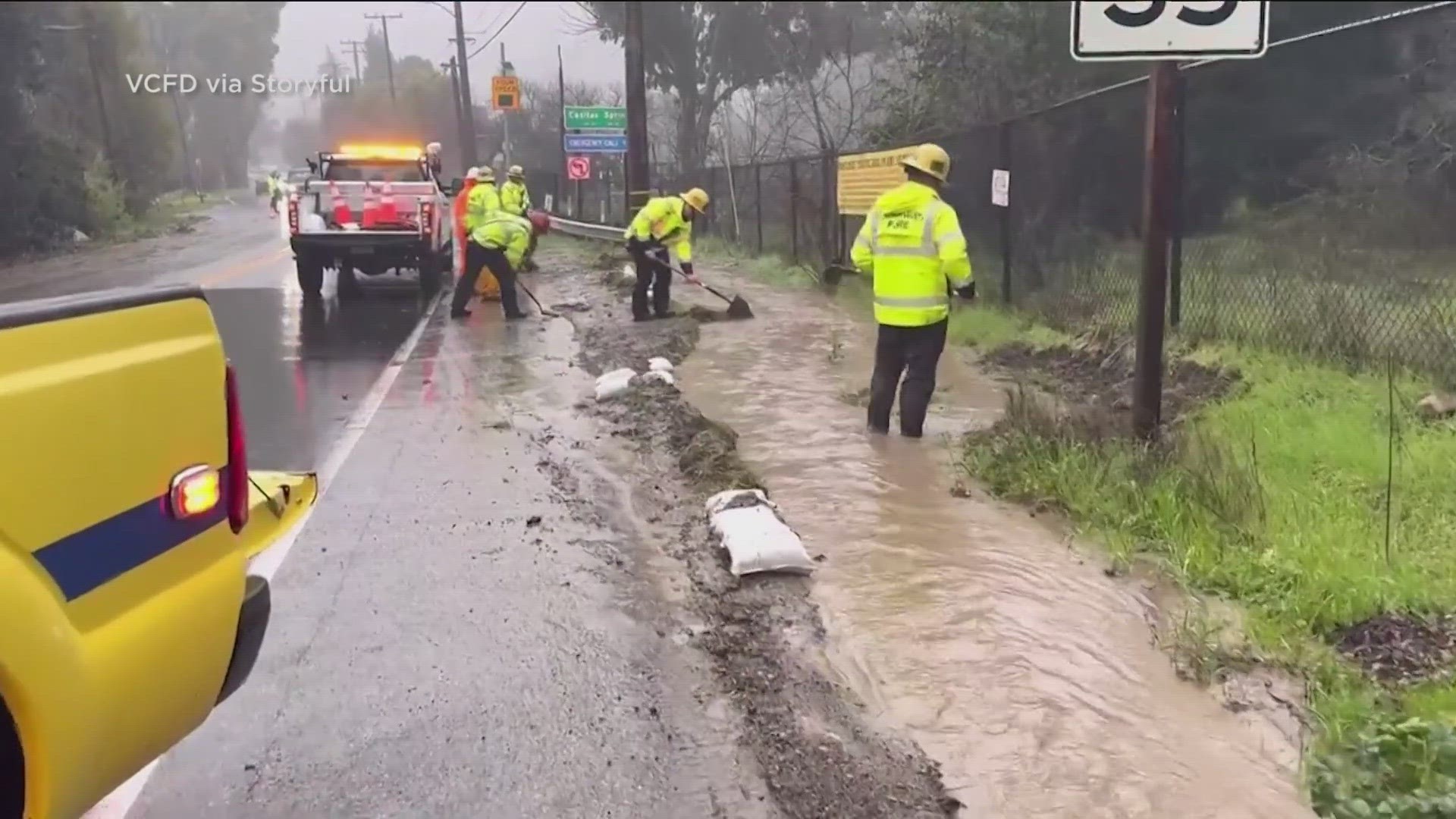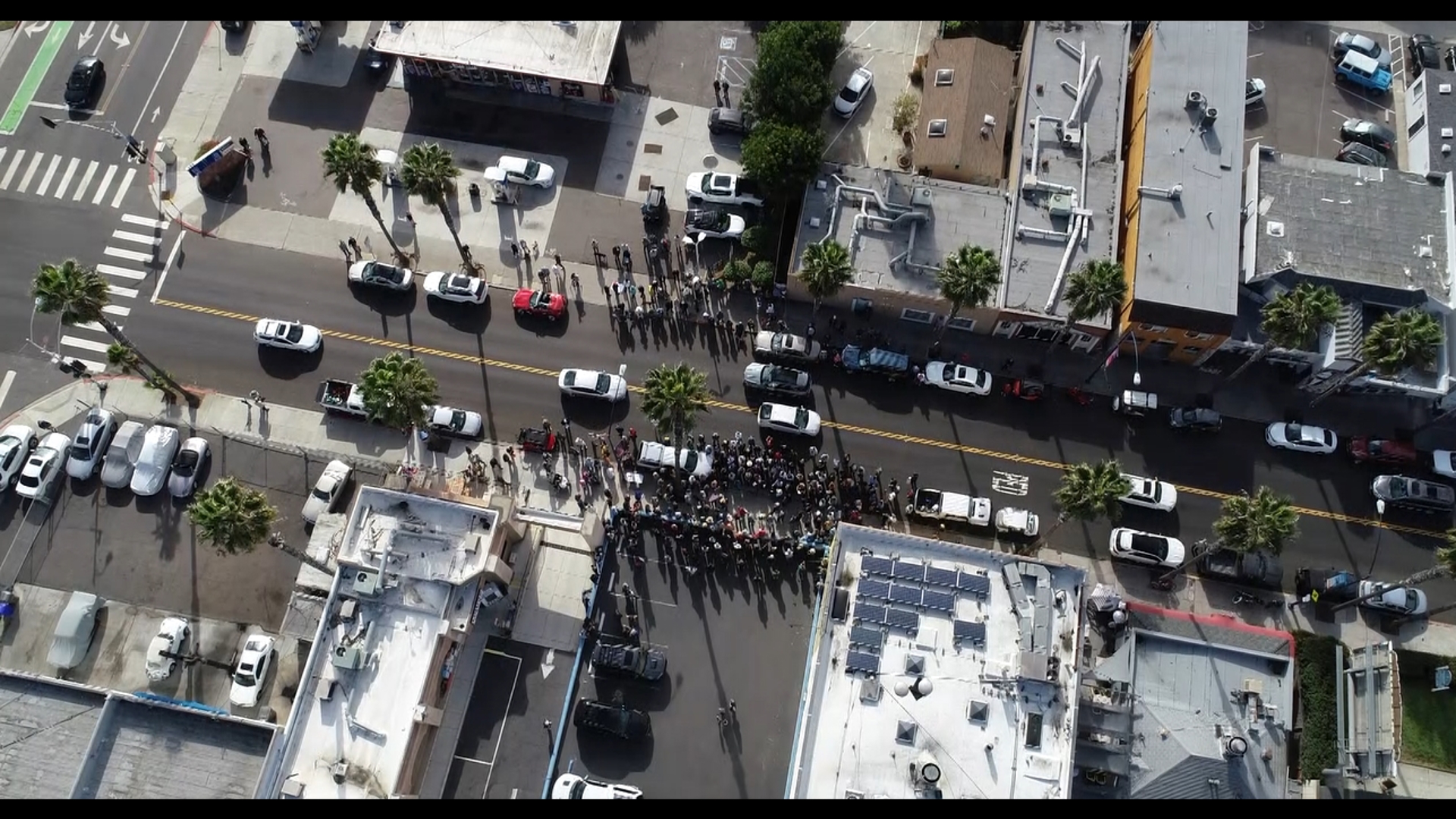SAN DIEGO — Another strong Pacific storm moved south along the coast of California, tapping into an atmospheric river of moisture along the way. As it continued to move south, it lost momentum and did not bring nearly as much rain to San Diego County as other counties to the north of us.
However, forecast models have scaled back from more aggressive projections on Monday. We've seen more than a half an inch for several cities with Palomar Mountains taking the top spot at more than an inch. We are not done with the rain yet. As the weakening atmospheric river moves through tonight through tomorrow morning, we will add to our totals. There is a slight chance for a few downpours overnight.
Rain will taper off by late Wednesday afternoon and evening with drier days to close out the work week.
WATCH: Big waves hit San Diego as another storm arrives in Southern California
Sandbag locations
All city recreation centers will be closed on Monday, Feb. 19 in observance of the Presidents Day holiday. Empty sandbags will be available beginning Tuesday, Feb. 20 at three recreational centers during operating hours.
- Encanto Recreation Center – 6508 Wunderlin Ave., San Diego, CA 92114
- Mountain View Community Center – 641 S. Boundary St., San Diego, CA 92113
- Southcrest Recreation Center – 4149 Newton St., San Diego, CA 92113
San Diego County Office of Emergency Services and ReadySanDiego.org reports that free sand and sandbags are available to residents and businesses throughout San Diego County at the following locations:
RELATED: San Diegans prepare for more rain expected Tuesday
What is an 'Atmospheric River'?
An atmospheric river is a long band of water vapor that can stretch for thousands of miles, hundreds of miles wide, over the Pacific Ocean.
The weather events have been known to bring major flooding to San Diego and the region, destroying homes, and entire communities, as well as wiping out hillsides and coastal bluffs.
Julie Kalansky PhD is the deputy director at the Center for Western Weather and Water Extremes at the Scripps Institution of Oceanography. Kalansky and her team specialize in atmospheric rivers and the forces behind them.
Kalansky likens the weather events to a stream of water vapor that flows over the Pacific Ocean.
"The name, 'atmospheric river' is very fitting," says Kalansky. "It's literally a river in the sky. Instead of water in a stream, it's water vapor in an elongated flume. It travels over the ocean, and when it intersects with our mountains, it rises and can produce large amounts of precipitation, both rain and snow."
The recent rain events have washed away sand at local beaches. Visitors at Moonlight Beach in Encinitas have noticed the sand disappearing and rocks now covering the beach. Geologist Pat Abbott says each winter sand washes away and most of it returns in the summer. However, he says what we're seeing now is much more dramatic than past years and is likely due to this year's storms.
Storm Preparedness & Resource Information
- The Get it Done app can help you report blocked storm drains, potholes and broken streetlights
- Sign up for Alert San Diego notifications for all your telephone numbers
- Report flooding to the City's emergency dispatch center at 619-527-7500
- Report downed electrical lines or gas emergencies to San Diego Gas & Electric at 800-411-7343
- ReadySanDiego.org has information on how to protect yourself and your property during a flooding situation
Flood advisement from San Diego Gas & Electric
- Do not touch any downed power lines or broken gas lines. Report them immediately to the police or fire department.
- If evacuating, disconnect all electrical appliances; turn off electricity at the panel, gas service at the meter, and water at the main valve.
- Before the Rain, Prepare for an Emergency
Handling Emergencies | From the County AlertSanDiego.org
- Family Disaster Plan: Create and/or review your own family disaster plan, (available in 12 languages).
- Register your cell phones: for emergency alerts.
- Download the SD Emergency mobile app: now with Earthquake Early Warning.
- Make an Evacuation Go-Kit and a Shelter-in-Place Stay Kit.
- Be prepared to evacuate with only minutes’ notice. Practice evacuating with your family.
- Have a go-kit to keep necessary items handy if you had to evacuate. including food and medication.
- Have contingency plans for different times of the day, such as an emergency while some family members are at work or school.
- Check with schools or childcare providers to make sure you are aware of emergency plans and how you will be contacted.
- Plan to reunite: In case you are separated during a disaster, discuss where to reunite because phone service may not be reliable during a disaster.
- Pets: Your pets are part of your family too. Make sure they are microchipped and you have evacuation items for them as well – including crates for small pets. In addition, have evacuation plans for larger animals such as horses or livestock.
WATCH RELATED: San Diego Storm | How Cal Fire is preparing, what you can do to protect yourself and your home





